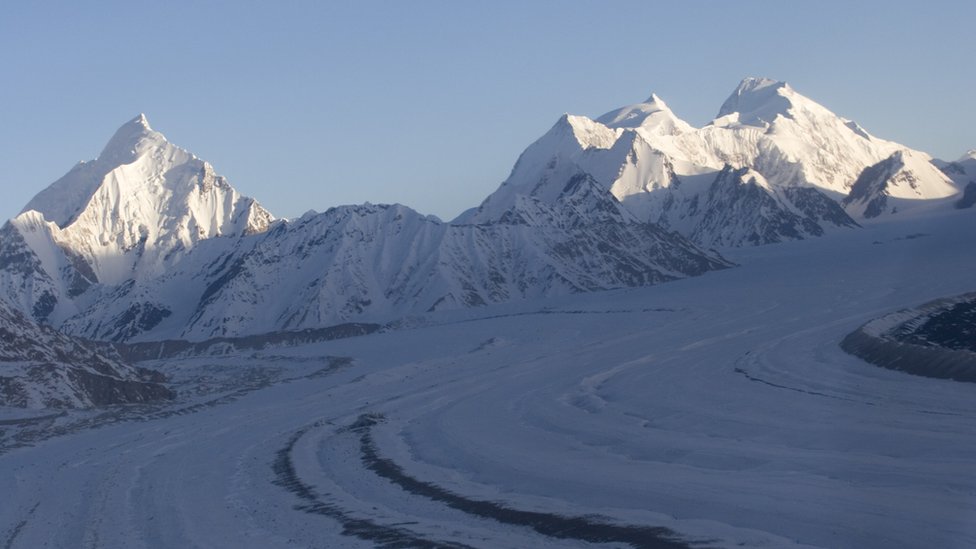Siachen Glacier shrinking due to rising temperatures
 Karachi, January 4 : The Siachen Glacier has reduced by 5.9 km in longitudinal extent between 1989 and 2009 because of rising temperatures, researchers say.
Karachi, January 4 : The Siachen Glacier has reduced by 5.9 km in longitudinal extent between 1989 and 2009 because of rising temperatures, researchers say.
Human presence at Siachen may also be affecting the neighbouring glaciers of Gangotri, Miyar, Milan and Janapa which feed Ganges, Chenab and Sutlej rivers, the Dawn reported.
According to the study by Dr Ghulam Rasul of the Pakistan Meteorological Department, Himalaya, Karakoram and Hindukush together make the largest mountain chain on earth and they are the custodian of the third largest ice reserves after the Polar Regions.
The glaciers in these mountain ranges feed 1.7 billion people through seven large Asian river systems, including the Indus, Ganges, Brahmaputra, Mekong and Yangtze.
These ranges are a blessing for South Asia as they protect it from the cold surges in winter associated with northerly winds.
The study says that since temperature maxima has been increasing at a greater rate, the thinning of ice and retreat of glacial extent has taken place simultaneously at an alarming rate. The decay estimates calculated by remote sensing techniques show that Siachen Glacier has reduced by 5.9km in longitudinal extent from 1989 to 2009. Thinning of its ice mass is evaluated at 17 percent.
A sharp decline in the mass of all glaciers has been seen since the 1990s. Accelerated melting process of seasonal snow and that of glacier ice from mountain glaciers have been adding to greater volume of water into the sea than normal discharges, it says.
Both precipitation and thermal regimes in Pakistan have suffered changes, especially in the recent two decades in line with a sharp jump in global atmospheric temperatures.
Visible changes in hydrological cycle have been observed in the form of changing precipitation patterns, cropping patterns, droughts, water availability periods, frequency and intensity of heatwaves, precipitation events and weather-induced natural disasters.
According to the study, both minimum and maximum temperatures have increased in summer and winter almost throughout Pakistan.
Late onset and early winter ending will reduce the length of growing season for crops which will complete their biological life quickly causing reduction in yields as plants will gain accelerated maturity without reaching proper height and size.
Early winter means that temperatures will start rising in February when wheat crop reaches the grain formation stage.
The study lists recent extreme weather events which caused great losses to the socio-economic sector. They are: cloudburst events (2001, 2003, 2007, 2008, 2009, 2010, 2011), prolonged droughts (1999-2002), historic river flooding (2010), tropical cyclones (1999, 2007, 2009, 2010, 2011), severe urban flooding (2001, 2003, 2007, 2008, 2009, 2010, 2011), heatwaves in spring (2006, 2007, 2010), snowmelt flooding (2005, 2007, 2010) and drought at sowing stage (2004, 2006, 2007, 2009, 2010, 2011).
About the floods of 2010 and 2011, the study says that such back-to-back occurrence of the history’s worst flooding is at least a unique phenomenon in case of Pakistan.
In 2010, intense precipitation concentrated over the elevated plains of Khyber Pakhtunkhwa due to interaction of three weather systems from east, south and north.
Similarly, another historic climatic anomaly occurred in 2011 when the monsoon axis set its orientation from head of Bay of Bengal to southern Sindh which was commonly found parallel to the Himalayas in case of heavy precipitation in Pakistan.
The study has been published in Nature-Pakistan. (ANI)